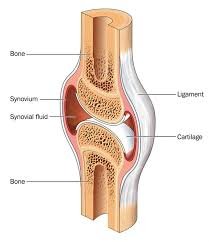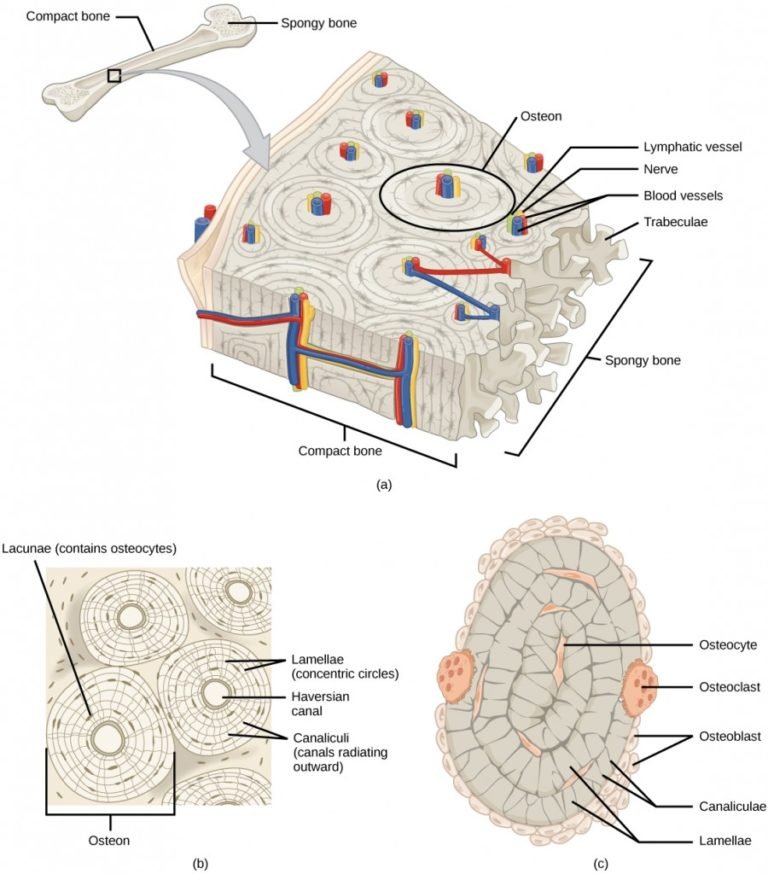Animal tissues are made up of the collection of animal cells. The origin, function, and structure of these tissues vary. Animal tissues are classified as muscular, connective, neurological, and epithelial. Let’s take a closer look at each kind of animal tissue.
Animal Tissue Types: The four primary categories of animal tissues are muscular, connective, neurological, and epithelial tissues.
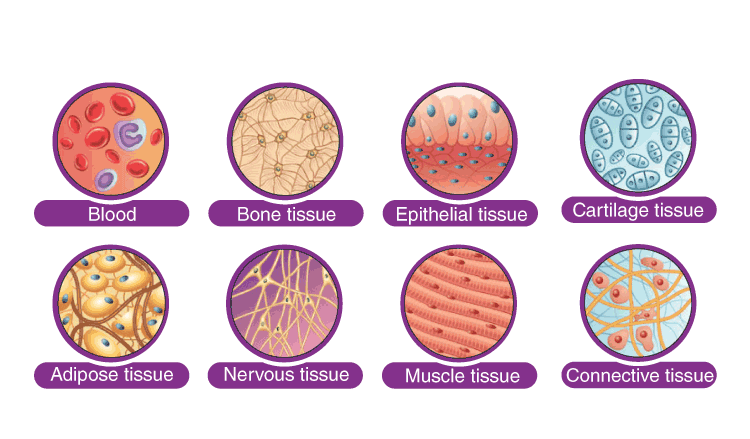
Tissue Epithelium: The inner lining and protective layer of the body and its organs are formed by epithelial tissues. These tissues were initially produced during embryonic development and were the first to evolve during evolution. They grow from the embryo’s ectoderm, mesoderm, and endoderm.
Features of Tissues of the Epithelium: The key features of epithelial tissues are as follows:
1. These may have one layer or several layers.
2. The tissues are capable of regeneration.
3. Desmosomes, zonula adheren, gap junctions, tight junctions, or interdigitation hold these together.
4. These cells have specialized flagella, cilia, and microvilli in their plasma membrane.
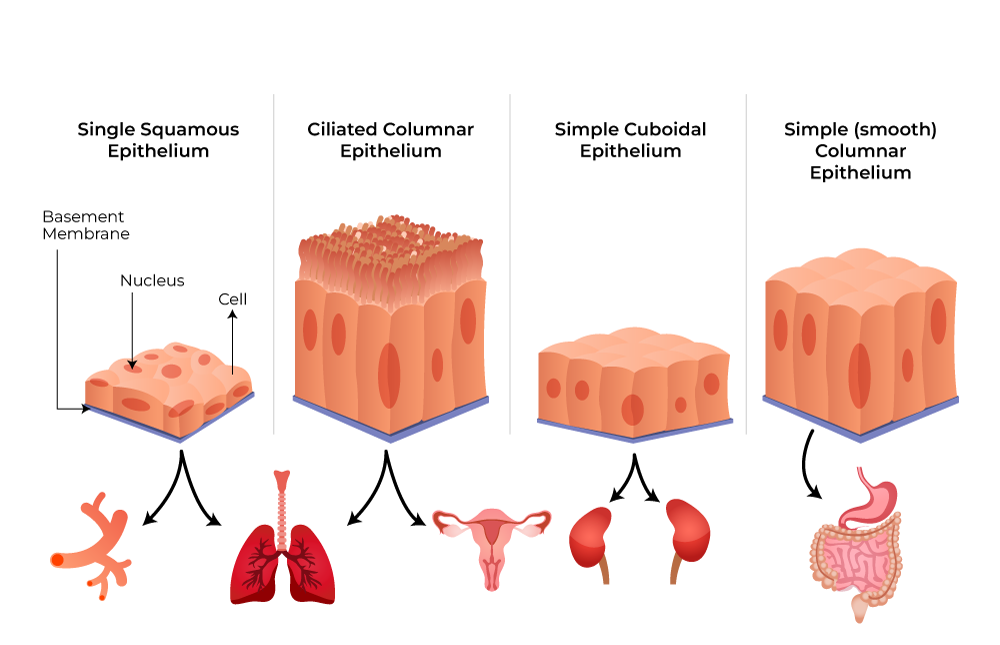
Groupings of Epithelial Tissues
Classification | Function |
| The sensory epithelium | To perceive stimuli |
| Glandular epithelium | Secretes chemicals |
| Pigmented epithelium | Imparts colour in retina |
| Absorptive epithelium | For absorption |
Tissue Connectivity- The embryo’s mesodermal cells give rise to connective tissues. They bind and support other bodily tissues. These consist of the following three parts:
1. The intercellular matrix: It is composed of hyaluronic acid, a mucopolysaccharide.
2.Plasma cells : Fibroblasts, adipocytes, plasma cells, and mast cells are the main types of cells.
3. Fibers : Collagen, elastic, and reticular fibers are the three types of fibers that make up connective tissues.
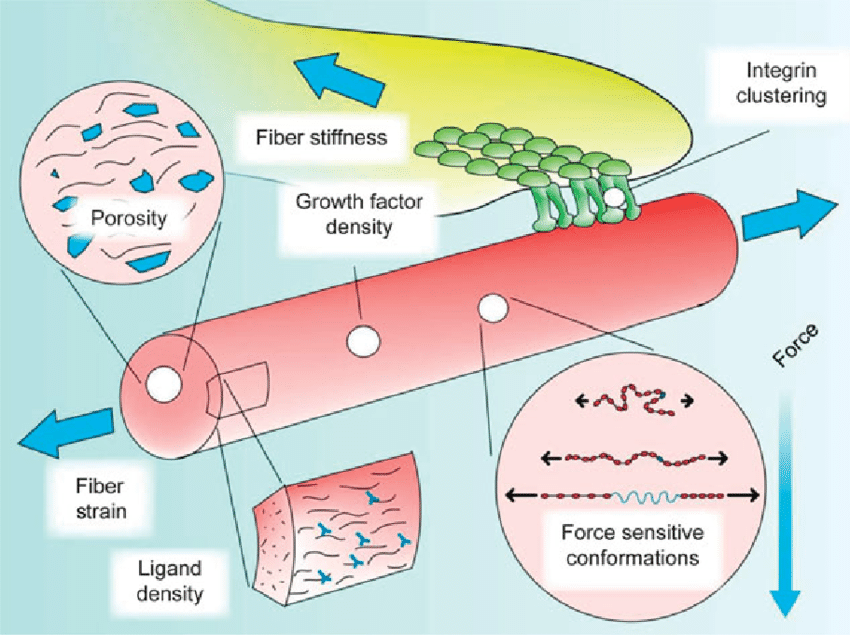
The following tasks are carried out by the connective tissues:
a. They bind tissues and organs together.
b. Adipose tissues are how they store fat.
c. They aid in tissue healing.
d. They guard against mechanical shocks to the organs.
e. The organs aid in defense as well.
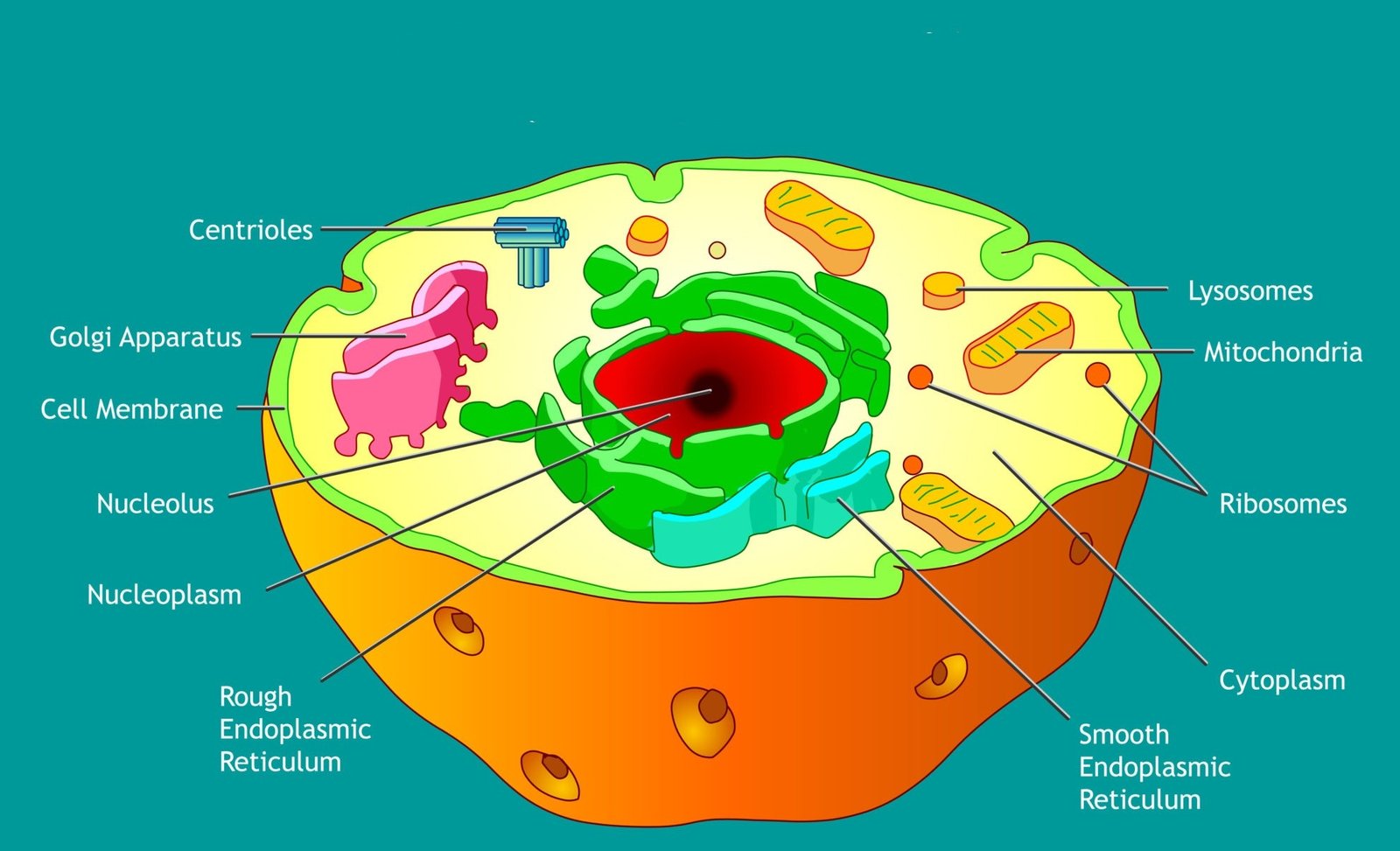
Classification of Connective Tissues
The connective tissues are classified as follows:
Classification | Function |
| Connective Tissue Proper | Provides support and protection to the body |
| Vascular Tissue | Transport of materials in the body |
| Skeletal Tissue | It supports the body and gives it proper shape and form |
The embryo’s mesoderm gives rise to the muscle tissue. It is divided into three categories:
- Cardiac
- Smooth
- Skeletal
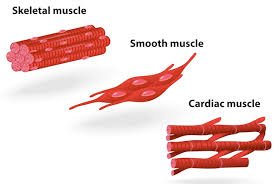
The activities of cardiac smooth skeletal muscle tissue include:
1. It facilitates motility and mobility.
2. The bones and other things are supported by it.
3. It is in charge of parturition and peristalsis.
Nervous Tissue
Nervous tissue makes up the peripheral and the central nervous system. It develops from the ectoderm of the embryo. It possesses the ability to initiate and transmit the nerve impulse. Its main components include:
- – These are the structural and functional unit of nervous system. It comprises an axon, cell body and dendrites.
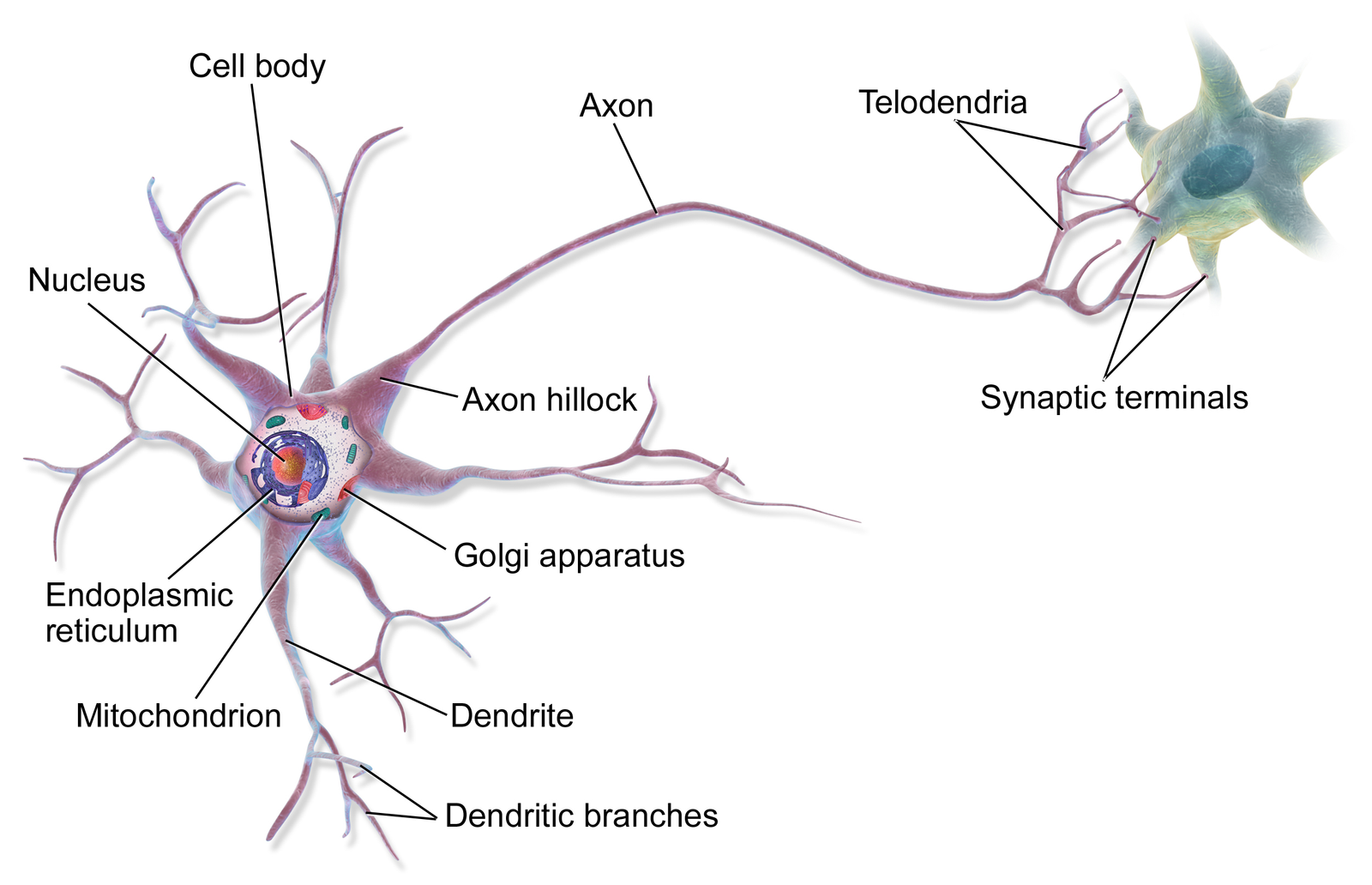
- Neuroglia – These are special cells found in the brain and spinal cord. They provide support to the neurons and fibres.
- Neurosecretory Cells – These function as endocrine organs. They release chemical from the axons direcly into blood.
Loose/Areolar Connective Tissue
It also called areolar connective tissue, has a sampling of all of the components of a connective tissue. loose connective tissue has some fibroblasts; macrophages are present as well. Collagen fibers are relatively wide and stain a light pink, while elastic fibers are thin and stain dark blue to black. The space between the formed elements of the tissue is filled with the matrix. The material in the connective tissue gives it a loose consistency similar to a cotton ball that has been pulled apart. Loose connective tissue is found around every blood vessel and helps to keep the vessel in place. The tissue is also found around and between most body organs. In summary, areolar tissue is tough, yet flexible, and comprises membranes.
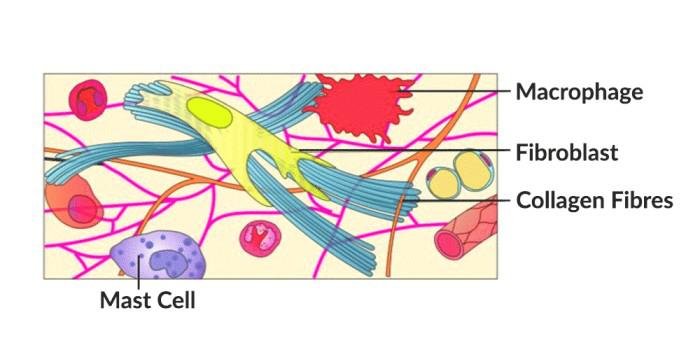
Fibrous connective tissues
Contain large amounts of collagen fibers and few cells or matrix material. The fibers can be arranged irregularly or regularly with the strands lined up in parallel. Irregularly arranged fibrous connective tissues are found in areas of the body where stress occurs from all directions, such as the dermis of the skin. Regular fibrous connective tissue is found in tendons (which connect muscles to bones) and ligaments (which connect bones to bones).
Cartilage
Cartilage is a connective tissue with a large amount of the matrix and variable amounts of fibers. The cells, called chondrocytes, make the matrix and fibers of the tissue. Chondrocytes are found in spaces within the tissue called lacunae.
A cartilage with few collagen and elastic fibers is hyaline cartilage. The lacunae are randomly scattered throughout the tissue and the matrix takes on a milky or scrubbed appearance with routine histological stains. Sharks have cartilaginous skeletons, as does nearly the entire human skeleton during a specific pre-birth developmental stage. A remnant of this cartilage persists in the outer portion of the human nose. Hyaline cartilage is also found at the ends of long bones, reducing friction and cushioning the articulations of these bones.
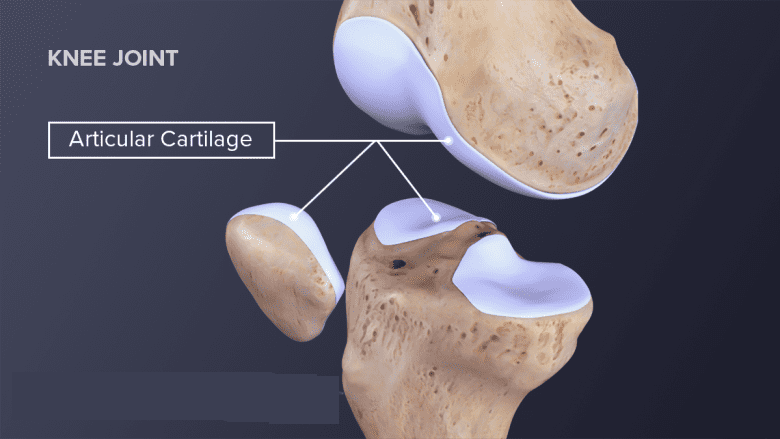
Bone
Bone, or osseous tissue, is a connective tissue that has a large amount of two different types of matrix material. The organic matrix is similar to the matrix material found in other connective tissues, including some amount of collagen and elastic fibers. This gives strength and flexibility to the tissue. The inorganic matrix consists of mineral salts—mostly calcium salts—that give the tissue hardness. Without adequate organic material in the matrix, the tissue breaks; without adequate inorganic material in the matrix, the tissue bends.
